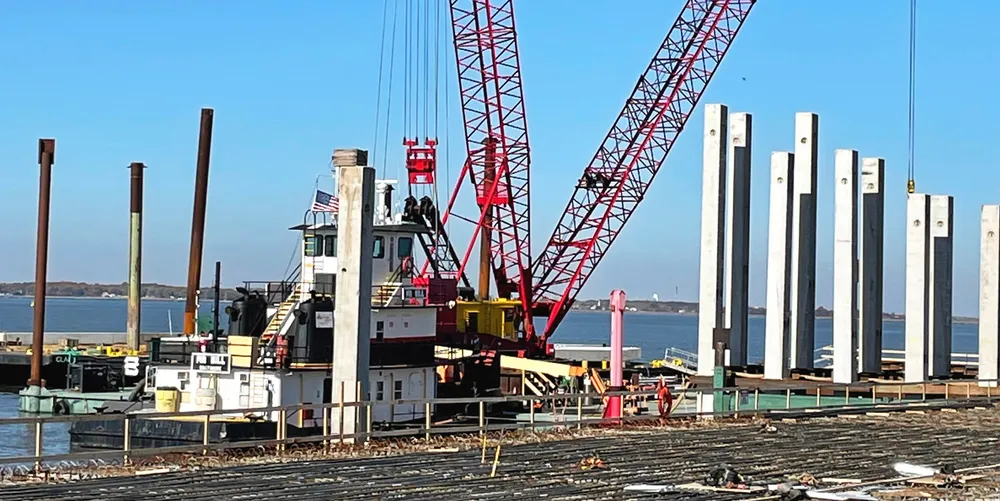New Jersey taking 'long term view' of $638m wind port that lost Orsted as its first tenant
State set to reopen leasing at US' largest coastal facility to fill gap left by cancellation of 2.25GW Ocean Wind 1 & 2

New Jersey Wind Port (NJWP), the nation’s first harbour facility purpose-built for offshore wind, is throttling down construction of its first phase following the surprise cancellation of Orsted’s Ocean Wind 1 project.
Construction of the port's 30-acre (12-ha) phase 1 marshalling capacity is already 90% complete, according to its owner, New Jersey Economic Development Authority (NJEDA), under an accelerated construction schedule to meet Orsted’s previous timeline.
Orsted's contract was to have commenced in April next year and to run for the duration of its two-year offshore installation.
Full completion of phase 1 “will now occur in mid-2024 in order to derive savings through avoided acceleration,” said Jonathan Kennedy, NJEDA vice president for infrastructure and managing director for the wind port.
Ocean Wind 2 was likewise to be marshalled from the NJWP starting in 2027 before it was cancelled.
The agency will shortly be commencing a notice to lease process to bridge the gap left by Ocean Wind 1, NJEDA confirmed.
The port project broke ground in September 2021 as the key infrastructure investment by the state to support its 7.5GW target, later expanded to 11GW.
The agency is “building the port with a long-term view of demand but is also taking near-term market dynamics into account when determining the timing for future phases,” Kennedy said.
New York awarded another 4.5GW of capacity in its round 3 tender, while three New England states – Connecticut, Massachusetts and Rhode Island – are collaborating to procure 6.4GW of new capacity.
“NJEDA is confident that future offshore wind projects will bring additional manufacturing demand to the port,” said Kennedy, confirming the agency is in discussions with several parties interested in developing manufacturing at the port.
“The Port will have a useful life of 50 years – though with diligent asset maintenance the asset’s life is infinite,” said Kennedy.
(Copyright)